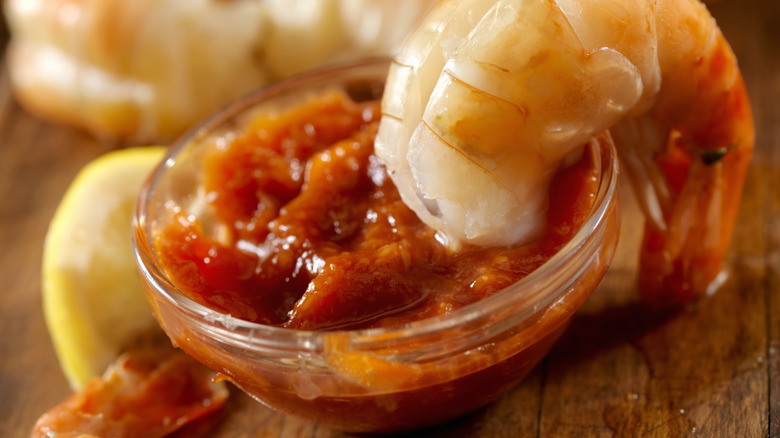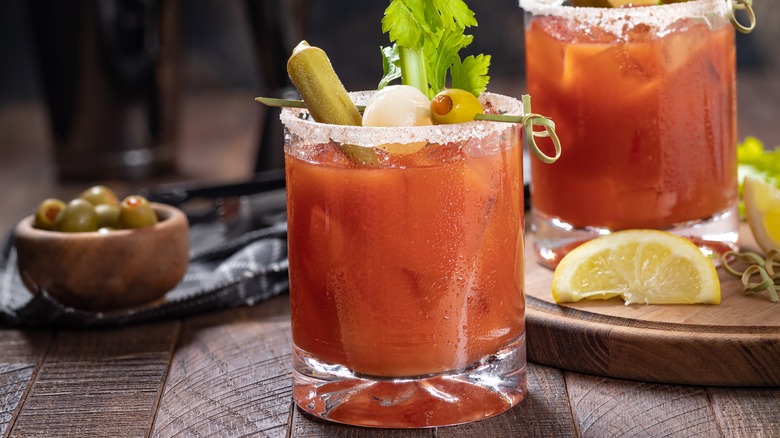How To Tell When Cocktail Sauce Has Gone Bad
Classic cocktail sauce is a versatile condiment that goes as well with catfish and hush puppies as it does with oysters and shrimp. Its savory, slightly spicy flavor brings a delicious kick to many meals, but unless you are serving it up at a party you probably don't use too much of it at once. With most bottles coming in portions somewhere between eight and 10 ounces, this often leads to leftover cocktail sauce being condemned to the back of your fridge, where it will eventually expire. If you have just unearthed an old jar of cocktail sauce in your kitchen, here is how to tell if it has spoiled or if it is safe to eat.
Fresh cocktail sauce has a bright red color, a fairly smooth texture, a tangy, umami flavor, and a spicy, tomato-y aroma. Be sure to use all your senses when using the sauce to detect if there are any noticeable and concerning changes in these traits. Visible discoloration or mold is a sure no-go, as is any sliminess. While the sauce is meant to be pungent and tangy, an intensely sour or unpleasant odor or taste is certainly a sign that it is past the point of no return. If you find any of these qualities to be present, it is best to err on the side of caution and dispose of the cocktail sauce so as to avoid consuming unsafe pathogens that could make you sick.
How to store cocktail sauce correctly
Properly storing your cocktail sauce will allow you to maximize its shelf life and prevent premature spoilage. You can store unopened jarred cocktail sauce at room temperature up until its expiration date. Once opened, though, it is far more ideal to store the sauce in the refrigerator, where it will last for up to six months. If you are storing homemade cocktail sauce, the guidelines differ, however. We recommend tossing from-scratch sauce after two weeks. While you can freeze cocktail sauce, it is best not to, as it will change the texture.
The best way to ensure no cocktail sauce goes to waste is simply to use it more often. While it is a great condiment for dipping seafood, there are other ways in which it can be utilized as well. Try using it to flavor the base of a Bloody Mary, use it as a marinade for meats, or turn it into a zesty salad dressing for greens.

